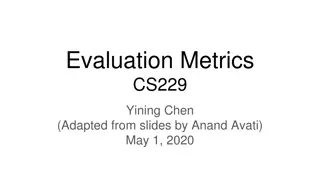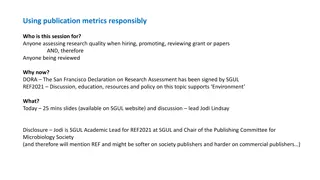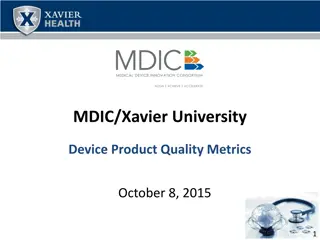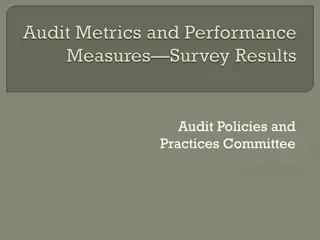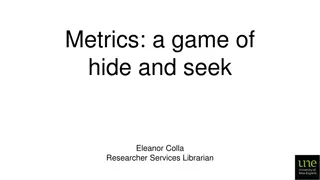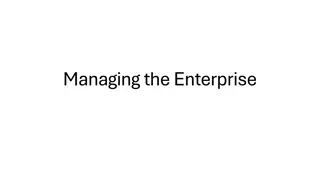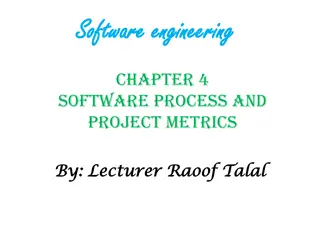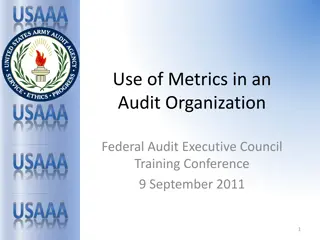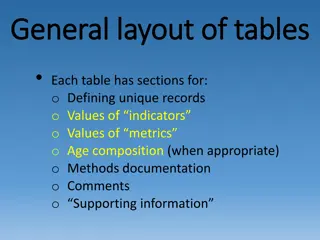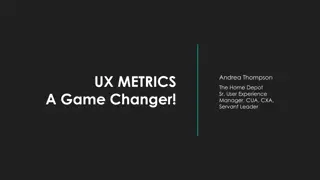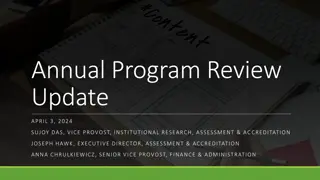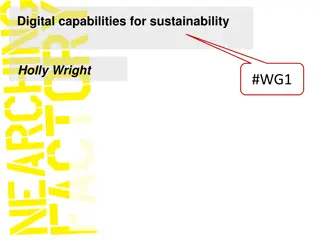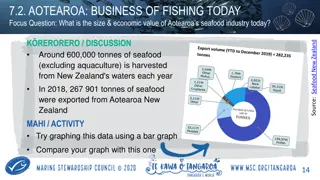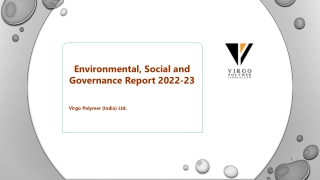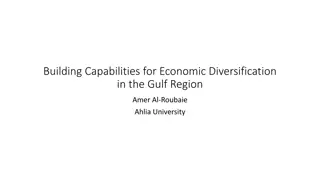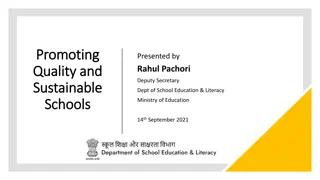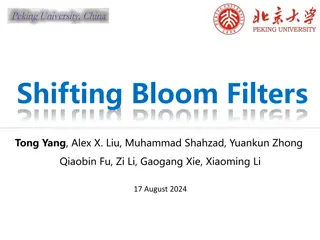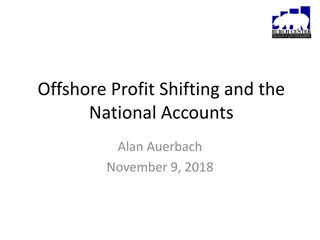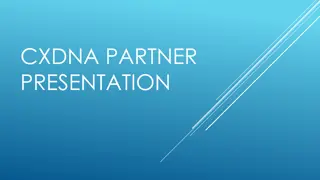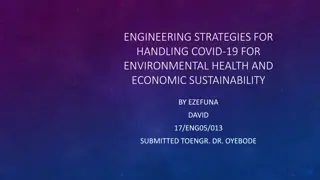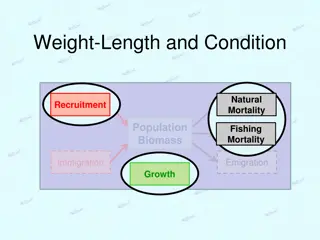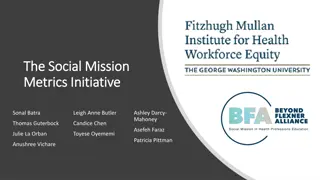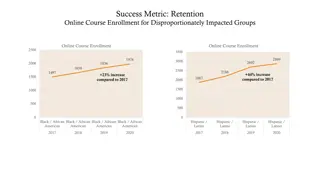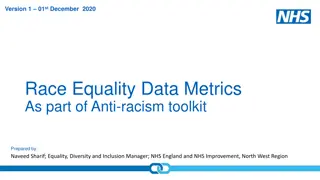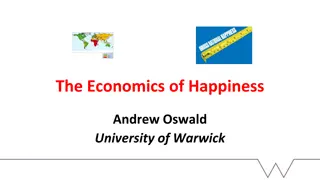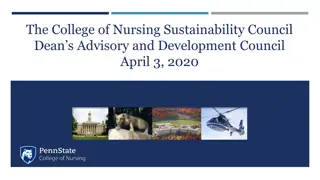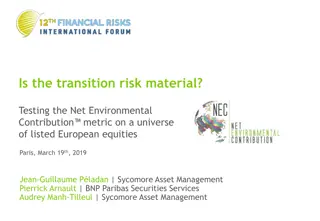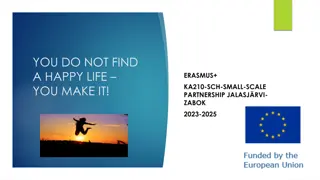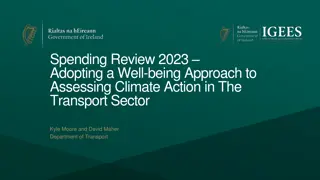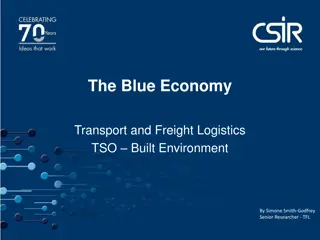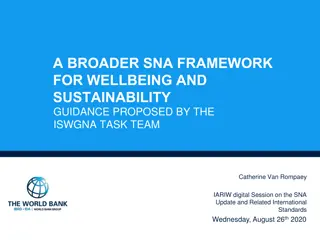Shifting Focus: Enhancing Well-being and Sustainability through Economic Metrics
Critiquing the limitations of GDP, the presentation explores the importance of incorporating household perspectives, distributional information, and non-market activities to measure well-being and sustainability effectively. Recommendations from the Stiglitz-Sen-Fitoussi Report are highlighted alongside insights on integrating real household income data within national accounts systems. The discussion emphasizes moving beyond GDP to prioritize indicators like household economic resources, confidence, consumption, savings, debt, net worth, and unemployment, culminating in a quarterly blog series per country to enhance economic analyses.
Download Presentation

Please find below an Image/Link to download the presentation.
The content on the website is provided AS IS for your information and personal use only. It may not be sold, licensed, or shared on other websites without obtaining consent from the author. Download presentation by click this link. If you encounter any issues during the download, it is possible that the publisher has removed the file from their server.
E N D
Presentation Transcript
A STATISTICAL INFORMATION SYSTEM FOR CAPTURING WELL-BEING AND SUSTAINABILITY Meeting of the Advisory Expert Group (AEG) on National Accounts Luxembourg, November 27 29, 2018 Peter van de Ven Head of National Accounts, OECD
Introduction Lots of criticism on GDP in providing adequate guidance for policy: Does not appropriately measure well-being (including its distribution), or progress of society more generally Does not address environmental issues and ecological boundaries GDP (sustainable) well-being GDP measure of economic activity But what then?
Staying Within the Current System of National Accounts It s about households, stupid! (paraphrasing President Clinton)
Putting people at the centre Very valid recommendations made in the Stiglitz-Sen- Fitoussi Report, in respect of macro-economic statistics: 1. When evaluating material well-being, look at income and consumption rather than production 2. Emphasise the household perspective 3. Consider income and consumption jointly with wealth 4. Give more prominence to the distribution of income, consumption and wealth 5. Broaden income measures to non-market activities
At the OECD Analysis of differences in the development of economic growth and real household disposable income Quarterly news releases on household disposable income Households Economic Well-being Dashboard Integrating distributional information witin the system of national accounts (together with Eurostat)
GDP growth versus real household adjusted disposable income
Households Economic Well-being Dashboard Moving beyond GDP to focus on household economic resources GDP and household income 3 indicators Confidence, consumption, and savings 3 indicators Debt and net worth 2 indicators Unemployment 2 indicators Updated quarterly approximately 4.5 months after the end of the reference quarter A blog each quarter focusing on one country s indicators http://www.oecd.org/std/na/household-dashboard.htm
Distributional aspects Sub-classifications per main sector Non-financial corporations: 11 Financial corporations: General government: Households: NPISHs: Need to integrate micro-data on households, to arrive at consistent and timely distributional information on income, consumption, saving and wealth More details on households, by income quintile/decile, by type of income, by composition of households Expert Group Disparities in National Accounts (EG-DNA) May also improve both micro-data and national accounts 96 15 7 2
Results from 2015 exercise: Savings ratios Saving as a percentage of disposable income by equivalized income quintile France United States Mexico
Going Beyond the Current System of National Accounts
At the OECD Estimating unpaid household activities Implementing System of Environmental- Economic Accounting (SEEA) Measuring (sustainable) well-being using a dashboard of indicators (e.g. OECD Better Life index)
A Vision for the Future So, it has come to this. The global diversity crisis is so severe that brilliant scientists, political leaders, eco-warriors, and religious gurus can no longer save us from ourselves. The military are powerless, but there may be one last hope for life on earth: accountants (Jonathan Watts)
Measuring well-being Starting point: Well- being is a multidimensional phenomenon One single measure not feasible OECD Better Life Index, various dimensions: Housing Income Jobs Education Civic engagement Health Life satisfaction Safety Work-life balance, etc.
I have a dream! Accept and communicate that GDP is first and foremost an indicator of (monetary) income or economic activity Establish a much better link between macro accounting framework and the work on (sustainable) well-being Embed the framework of national (monetary) accounts into a much broader framework of national accounts Practical approach: start with including and regularly updating of accounts for environment, unpaid household activities, health, and education Such an accounting system may provide underlying accounting framework for several aspects of well-being an improved information basis for analysing trade-offs and win-wins between various aspects of sustainability and well-being Developing such a framework could be the objective of the guidance note on sustainability and well-being
Questions and issues for the AEG The AEG is requested: To provide its opinion on the proposal put forward to define a broader framework of national accounts, which could be used as a starting point for developing the guidance note on sustainability and well-being To provide further ideas and suggestions to arrive at a better link with the work being done in the area of (sustainable) well-being 18


